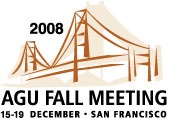 |
The review of the 1975-1977 eruption of La Soufrière de Guadeloupe (FWI)
François Beauducel and Pascale Besson
American Geophysical Union, Fall Meeting 15-19 November 2008, V44A-03,
Invited paper at session "'Failed' Magmatic Eruptions: When Unrest Leads to Quiescence".
|
Abstract.
The last eruption of La Soufrière de Guadeloupe (FWI) occurred in 1975-1977 after a 450-year period of moderate activity with four phreatic eruptions (1690, 1797, 1937, and 1956). The volcanological context was poorly known, and no geological map was available. After one year of significant seismic precursors, 26 phreatic explosions have been observed between July 8, 1976 and March 1st, 1977. Four of them were quite strong and associated with extensive and deep fracturing of the 1530 AD lava dome. A total amount of 800,000 cubic meters of material were ejected. 16,500 seismic events were recorded, with a maximum magnitude of 4.5, MSK VI on August 16, 1976. At the beginning of the eruption, the basic seismic network of the observatory has been extended with geochemical and geophysical parameters (gas and spring components, petrology, tiltmetry, magnetometry, and seismicity). In July 1976, due to the first explosion, 25,000 people leaved spontaneously during few days. On August 15 1976, based on scientists advices, the Prefet decided an official evacuation of the 73,000 inhabitants. A disagreement between scientists led the Prefet to confer an international committee, that advised the return of the population on December 1st, 1976, while strong eruptive events were still in progress.
We propose a review of the main chronological events, the monitoring data, and the scientific analysis and decisions taken during the crisis. After more than 30 years, and experiences of St Helens and Montserrat, this major crisis still can be analyzed as a failed magmatic eruption. This is an important point for the present activity comprehension.
Download the paper (19-slide presentation): 
